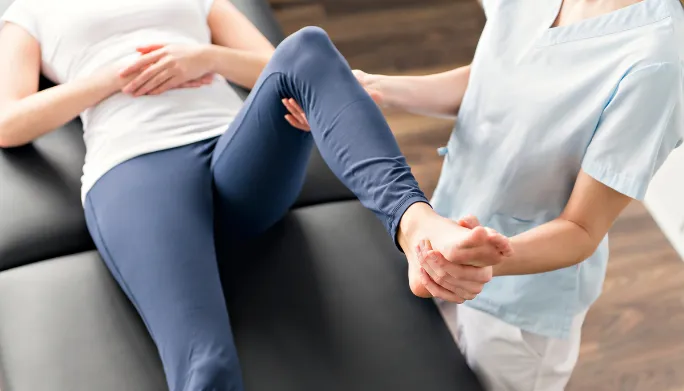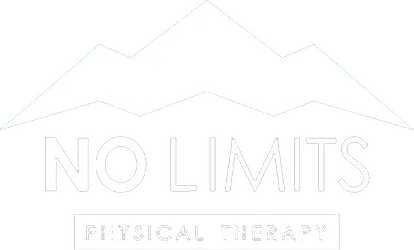Joint Mobilization In Castle Rock, CO

Restore Comfort Through Joint Mobilization in Castle Rock, CO
If painful joint stiffness, restricted flexibility, or alignment issues across body regions have limited your mobility, our joint mobilization services can effectively treat mechanical dysfunction for lasting relief. This manual physical therapy technique applies targeted forces to sensitize joint neurology using skilled, gentle movements. Allow our specialists to help you move freely and confidently again.
Our Approach to Joint Mobilization in Castle Rock, CO
We approach joint stiffness, injury, and general wear and tear holistically by addressing root mechanical causes of nociception and dysfunction rather than covering painful symptoms temporarily. Combined with tailored strengthening plans, joint mobilization techniques pave a progressive path towards confident mobility by focusing on the long-term restoration of ideal joint sliding capacity and biomechanics through patient-centered manual therapy instead of passive quick fixes. Your most fulfilling physical life awaits through consistent commitment – and our specialist’s only role is to serve as an invested, compassionate guide along the way, moving at your pace.
Who Can Benefit from Custom Joint Mobilization Techniques?
Joint mobilization provides both acute and cumulative benefits effectively across:
- Osteoarthritis management
- Sports injuries like sprains and dislocated joints
- Tendonitis or frozen shoulder issues
- Neck, mid back, or low back discomfort
- Poor posture and chronic pain
- Lifting injuries and repetitive strains
- Limited spinal extension/rotation/flexion
- General exercise performance enhancement
Essentially, anyone experiencing painful movement impairments or restrictions in the normal range of motion around joints and connective tissues from past injury, postural dysfunction, or wear and tear can find lasting relief through manual mobilization treatment protocols.
Your Compassionate Joint Specialists
Our passionate clinicians invest in robust, continuing joint mobilization education to progress patient comfort and mobility using the latest techniques. With advanced certifications and thousands of hours skillfully delivering tailored manual therapy, your experienced physical therapist integrates empathy into care by truly listening to lifestyle contexts framing your impairments.
This patient-centered approach combines clinical expertise with validated therapy tools like mechanical force physics, augmented biofeedback, and targeted exercises, allowing patients to safely realize improved movement and recovery on their own terms.
Custom Joint Mobilization in Castle Rock, CO
During assessments, we evaluate and compare joint play, end feel quality, mobility and coordination between regions identifying:
- Hypomobile or hypermobile segments
- Painful tissue barrier limitations
- Poor synchrony through transitional phases
- Need for stability or mobility emphasis
This objective data combined with subjective feedback allows customized manual therapy plans leveraging:
- Grade I-IV joint gliding/trac
- Manual cervical traction
- Functional movement pattern integration
- Corrective home programs for independence
We make adjustments as positional awareness, mobility freedom, stability, and strength are improved.
Optimize Joint Dynamics With Targeted Mobilization
During hands-on assessments, your clinician analyzes joint play quality and mobility restrictions, identifying hypermobile segments that are not sequencing properly through a range of motion. We also pinpoint painful limitations blocking progress through certain vectors.
This objective data combined with subjective lifestyle context allows customized manual therapy plans to leverage various grades of joint mobilization techniques:
Grade I Joint Oscillations: Applying gentle rhythmic traction pressures stimulates fluid diffusion for nutrition while calibrating neural tension thresholds to expand over successive sessions.
Grade II Joint Gliding: Progressively directing target joints through manually resisted motions reeducates positional proprioception and reinforces capability in a newly restored range of motion planes.
Grade III-IV Joint Manipulations: Brief, concentrated forces targeting limitations at joint barrier edges encourage fluid movement and mobility gains when other grades plateau.
Complementary Spinal Traction: Decompressing segments with axial distraction or lateral glides alleviates nerve root tension, enhances mobility, and frees movement potential.
Precision Muscle Energy: Isometric muscular resistance allows precise joint realignment control, dynamic flexibility progressions, and improved neuromotor control education throughout ranges.
Post-Mobilization Exercises: Fine-tuning motor patterns after joint capsules slide open cement gains for cumulative tissue capacity and coordination enhancement transferable to a global movement.
FAQs
What is the difference between joint mobilization and stretching?
While both aim to improve mobility, joint mobilization uses targeted manual forces to expand ranges of motion and slide joint surfaces, while stretching relies more on sustained muscular lengths and tension through active or passive positioning. Mobilization also directly impacts joint neurology and proprioception.
What is an example of joint mobilization?
Manual therapy techniques include gently oscillating the elbow after injury to improve flexion/extension capacity, applying rhythmic cervical traction to reduce neurological symptoms from poor positioning, and manipulating the shoulder joint following immobilization to optimize mobility.
How do you perform joint mobilization?
Clinicians use specialized skills analyzing movement restrictions across planes then apply manual forces and movements customized to each patient based on impairments. With advanced palpation, we determine appropriate directional pressures and velocities meeting the restrictive barriers then progress joint play delicately over successive sessions to broaden ranges of motion.
Is joint mobility the same as flexibility?
While related, flexibility refers more to muscular extensibility surrounding joints controlled actively through internal tension, while mobility references the quality of passive joint articulation and neuromotor control achieved through external movement of bony segments. Balancing joint mobility and stability optimizes function.
Improve Joint Mobilization in Castle Rock, CO Today
If painful, irritable joints continue negatively impacting activities you enjoy, noninvasive joint mobilization techniques could provide targeted relief. Contact us today in Castle Rock, CO to schedule an assessment on leveraging manual therapy to get you moving with comfort and ease again!


